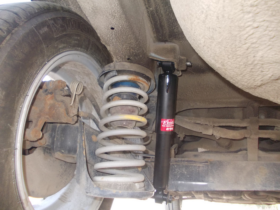Swan flew to orbit
January 10, 2014.
Ants, antibiotics and a navy from tiny satellites went to the ISS after the successful launch of the Signus spacecraft (Cygnus translated by Swan) on January 9 from the city of Wallops, Verjinia, USA at 1:07 Local time. In addition to the fact that the event is already that Signus first went with a mission to the ISS, it is also considered the beginning of the scientific and commercial operation of the near -Earth orbit. Lededa is under the control of the frequent company Orbital Science from Dallas, Verjinia. In September last year, it became the second private company, which sent the ship to docking with the ISS. Prior to this, only one company – SpaceX, operating regular flights to the ISS in order to replenish stocks.
Now, NASA has a choice between two private companies that offer their services in the delivery of goods. This means that the era of commercial competition for space has begun. The presence of only one carrier company is like the existence of only one postal service. But now, when there are already two companies, NASA says that it increases the possibilities.
On board the Signus is also a fleet of 28 small satellites sent by Planet Labs. Together they are called Flock 1, and separately it is Cubestts, each of which has only 10 centimeters in length. They will be launched into space with the ISS around the Earth. They will take photos, which will monitor natural disasters and other situations on the planet. Clients launched Cubestats from the ISS earlier, but they did not work as a group. Flock 1 will be the first flotilla from satellites working together. It is also worth noting that this is the first commercial project of this kind in space launched from the ISS.
The network of private firms participating in the deployment of Cubesats demonstrates how the ISS gradually develops business. This is the beginning of the era of a clear separation between public infrastructures (NASA) and commercial service providers.
Muravyov into space on Signus was also sent not in vain. This is done specifically for children. The project is called “ants in space” and children on Earth will be able to monitor how the behavior of ants will change in conditions of microgravity. Well, antibiotics on board the swan are designed to study their effectiveness in space conditions. This project is intended to help treat astronauts.








Hello!! My name is Jeanine
I love to eat, travel, and eat some more! I am married to the man of my dreams and have a beautiful little girl whose smiles can brighten anyone’s day!